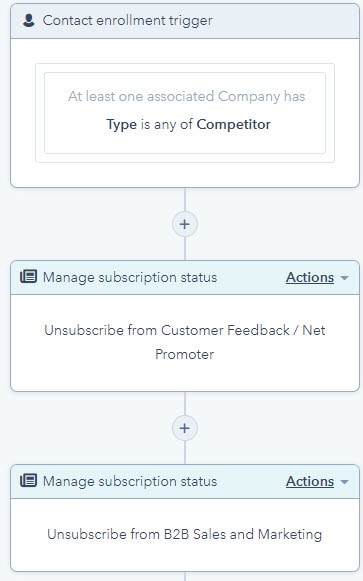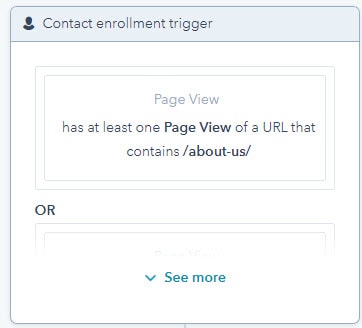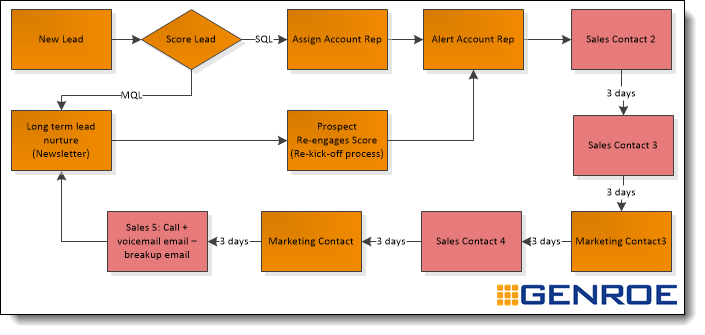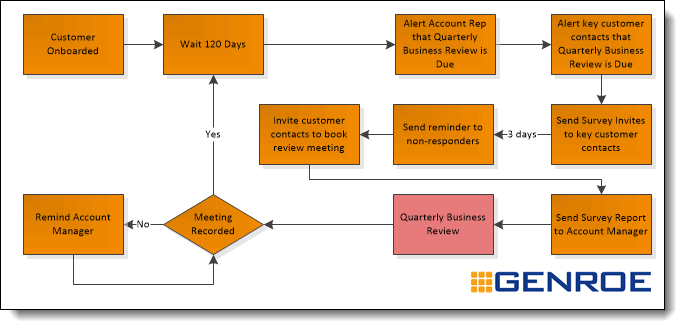You’ve just launched a brand new marketing automation system and you’re just itching to get started automating things but where to start?
Yes, you can set up another “welcome” series, yawn. Just what your customers need – another welcome email follow up by weeks of un-personalised newsletters.
The real opportunities are so much bigger.
I’ve been implementing and testing marketing automation approaches for 20 years and automated lots of different elements of the sales and marketing process.
In this post I’ll show you some effective and easy to copy marketing automation use cases you can deploy in a matter of hours to boost leads and sales.
5 Automations to Augment Prospect Data and Update Contact Details
You marketing automation system typically has lots of data about the contact, their location, their company and more.
Here are five examples that use marketing automation to enrich that data without human help:
- If you only service one country or location use location information to set lead status to “Out of Market” if the prospect is from another country
- If a contact has not opened or clicked an email for a long time, set them to “Unengaged”, and alert their account manager (see below)
- If the contact works for a competitor, unsubscribe them from all updates. (Keep them in your system so they can’t re-register and get the content again)
- Set contact Lead Source based on the social media advert they came from.
- Update their interest profile based on the website pages they have viewed.

5 Ways of Automatically Alerting Sales Staff To Important Prospect Activity
Most systems can be integrated with your website activity tracking. You can then use this information to alert sales staff when a prospect does something “interesting” or out of the ordinary and incrase sales close rates.
Here are five different marketing automation alerts you can create in minutes for your Account Managers:
- Their prospect downloads a new piece of content
- Their prospect visits the Pricing / About Us / Reviews / Product X /Service Y page on your site
- Their prospect unsubscribes from your newsletter list(!)
- Their Sales Opportunity or Deal has not been updated in 30 days. (Better yet, alert their manager.)
- Their prospect has viewed more than 10 pages on the website in the last 10 days.

Each of these simple alerts helps the salesperson to understand how the prospect is proceeding through the sale cycle.
5 Personalisation Focused Marketing Automation Examples
One of the most powerful aspects of marketing automation is the ability to deliver personalized content to your audience: here are some examples:
1. Personalized Content Recommendations
Analyse your audience’s browsing history and content consumption patterns to deliver personalized content recommendations.
For example, if a prospect frequently visits your blog and reads articles about a specific topic, you can set up an automation to send them an email with more content related to that subject. This way, you keep them engaged and encourage further exploration of your website.
2. Tailored Product Suggestions
Use past purchase data to offer customers personalized product suggestions.
If a customer has bought a particular item from your store, create an automation that sends follow-up emails showcasing related products or accessories they might be interested in. This not only encourages repeat purchases but also demonstrates that you understand their needs and preferences.
3. Personalised Onboarding Emails
Make new customers feel welcome and valued by sending personalised onboarding emails.
Instead of a generic “welcome email” message, tailor the onboarding process to the specific product or service they signed up for.
For example, if a customer has just subscribed to your premium plan, send them an email with tips and resources to help them make the most of their subscription.
4. Segment-Based Offers and Promotions
Segment your audience based on factors like demographics, location, or purchase history, and send targeted offers and promotions that cater to each segment’s needs.
For instance, you could send an exclusive discount to customers who have not made a purchase in the last six months or offer a limited-time bundle deal to frequent shoppers.
5. Personalised Re-engagement Campaigns
Identify inactive users and create personalised re-engagement campaigns to bring them back to your website or app.
For example, if a user hasn’t logged in for a while, send them an email highlighting new features, content, or products that have been added since their last visit. Alternatively, you could offer an incentive, such as a discount or a free trial, to encourage them to re-engage with your brand.
Smart Automated Lead Nurturing with Integrated Sales Activity
20 years ago lead nurturing was done by the salesperson. Every month they looked through their 4×6” prospect index cards and found a reason to contact each person and remind them they existed.
Now the process is automated but don’t be like everyone else and send endless irrelevant marketing “newsletters”. Instead, integrate and coordinate with the sales team to supercharge conversion rates.
In the marketing automation example below the sales team is used to deliver content unique to the prospect – the stuff that’s hard to automate.
And marketing automation is used to score the lead, alert the sales team and provide fill-in content to keep the prospect engaged – stuff that’s hard to get people to do long term.

Here are some tips when creating the lead nurture automation:
- Mix up the content you send: bottom of the funnel “book a meeting” emails through to top of the funnel education pieces. That way you catch people at all parts of the funnel.
- Remember, the goal in B2B marketing, is to stay top of mind over the long sales cycle. So always provide good valuable content. You want them to stay engaged, not unsubscribe.
- Space sends out by a few days, or even a week. Don’t send all of your content at once; you’ll annoy the prospect and have no more reasons to contact them.
Automating your Account Management Reviews
It’s best practice customer retention management for B2B organisations to survey customers on a regular basis and then meet to review health of the relationship.
The problem is coordinating the account management team with the survey tools can be difficult and open to forgetfullness.
But if, for example, you use your marketing automation system to coordinate the business review, many of the administrative problems disappear and you can better report on the overall process.
Below is a diagram of the whole automation – this simple automation has the ability to dramatically drive up compliance with the business review process and with it customer retention and revenue.







